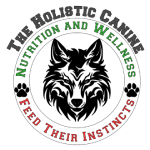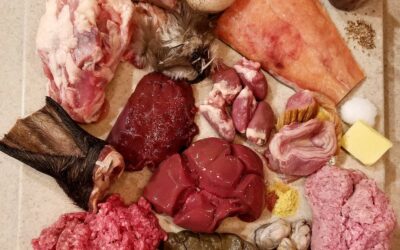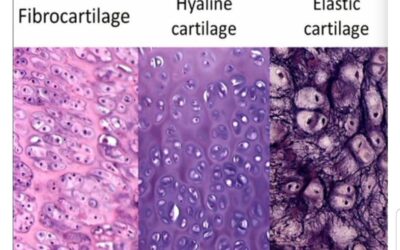PART I: Creating Balance with Raw Meaty Bones
If you know me, then you know how insistent I am about feeding raw meaty bones (RMBs) with an abundance of marrow and connective tissues. One of the most influential books on my raw journey was Dr. Tom Lonsdale’s Raw Meaty Bones Promote Health. My three dogs’ early diet was missing the most critical component (back in 2002 through 2010 I was making my own home cooked dog food). I cannot express enough how much I wish I had known then what I know now. While my homemade diet appeared successful, it was missing the bones, bone marrow, and connective tissues that my dogs absolutely required. I did regularly give my dogs marrow bones for recreational chewing, but this was not sufficient to supply the plethora of minerals and even vitamins found in whole bones. I was fortunate to have healthy dogs, but then again even kibble can produce “healthy” dogs. The goal should always be to achieve optimal health and disease resilience.
Bones with marrow and connective tissues are critical to the cultivation of overall optimal health. Bone is a major source of minerals in the raw diet. I have written and taught about bone numerous times and its importance cannot be understated. Let’s review the nutritional value of bone before I discuss balance.
Hard bone contains:
- calcium
- phosphorus
- magnesium
- potassium
- sodium
- chloride
- sulfur
- silica
Marrow contains [1]:
- calcium
- iron
- zinc
- manganese
- selenium
- vitamin A
- vitamin E
- vitamin K
- B vitamins ( B1, B2, B5, B7, B12)
- Boron
- fatty acids
The connective tissue is a major source of:
- glucosamine
- chondroitin
If you took the time to really review the nutrient list, then I bet you are as impressed as I am. When I began researching species-appropriate foods for our modern canine, I was pleasantly surprised to discover that bone holds the key to many of the hard-to-source nutrients that too many pet parents are struggling to adequately supply in their dog’s diet. In my earliest years of raw feeding, I never considered these nutrients difficult to source. As a result of this growing concern among pet parents, I began to take a closer look at what and how many pet parents were feeding their dogs. Needless to say, I created The Holistic Canine in 2016 and just recently started a Learning resource group on Facebook due to what I observed. (Be sure to join our NEW group for free education units and personalized answers to questions.)
Dr. Ian Billinghurst and Dr. Tom Lonsdale were already teaching how to feed dogs back in the late 1990s and early 2000s. So why were so many pet parents suddenly turning to a new method of feeding their pets? Much of this new method of raw meal creation had to do with the growing popularity in raw feeding and the NRC’s release of their updated work Nutrients Requirements of Dogs and Cats. This ushered in numerous canine nutrition courses offered over the internet. Now don’t get me wrong, I believe education is critical and I insist that all of my clients consult with me to learn canine nutrition. The problem is many people tend to complicate what they learn, especially from online courses that give people a “stamp of approval,” and in turn cause confusion creating a lack of confidence in well intentioned pet parents fearful of making life threatening mistakes. And, this is also a business strategy to get frightened pet parents to hire the “certified professional” to create “complete and balanced” recipes at an often steep price.
One of my favorite quotes is from veterinarian Dr. Jeannie Thomason. She wrote, “‘Balance’ is nothing but an insufficient human term, a vague concept that pet food companies employ to make people buy processed foods for their pets.” And now raw food “professionals” have adopted the “complete and balanced” motto.
While there is no doubt that our pets need specific nutrients, the problem is that there is no possible way to know how much of each nutrient each individual dog actually requires. We can balance a diet in accordance with the NRC, FEDIAF, or AAFCO standards, but then the diet is not balanced to a dog’s individual needs. It is, rather, balanced to standards created for the pet food industry. I do, however, encourage every pet parent to learn what nutrients their dog requires in accordance with the NRC standards. This is then used as a reference.
I would like for you to consider this important fact. Have you ever thought about the concept of balance? If in fact balance is critical in every meal as is suggested by the pet food industry (and some pet nutrition buffs), then if your dog received a meal that was not balanced, his cells, tissues, organs, endocrine system, digestive faculties, and so forth would show signs of something missing. Symptoms, immediate acute conditions, and eventually nutrient-imbalanced pathologies would develop or follow within days. How can we verify this? We can verify this by the fact that true balance is established via the body (biological system) based on physiological need that is affected by internal and external influences. It can be confidently stated that nutritional needs are met over a period of days or even weeks, while balance is achieved by the biological system via what is consumed. This is also understood by the fact that nutrients are stored within the body tissues. When a nutrient need arises, that specific nutrient is drawn out of storage to be utilized as needed. We can take this even further to show that this is the very reason why humans and animals can fast for long periods and suffer no ill effect. If anything, fasting is used to balance the body to help create (or return to) homeostasis. Being a board certified nutrition professional, I am highly versed in fasting and the benefits that fasting has on biological systems. I am 100% confident that balance is achieved by and through the body while nutritional balance occurs over a period of time.
Based on all of the above, how to provide a nutrition plan that will allow for your dog to efficiently create and maintain balance is the real question we should be concerned with. How is this achieved? This is achieved by feeding your dog a diet that most closely mimics what nature has provided for canis lupis familiaris. I call this a species-appropriate diet. We may have domesticated a wild carnivore, but our modern canines remain anatomically carnivorous. And despite the fact that physiologically several breeds of the modern canine may show signs of DNA adaptation as a result of generations of exposure to human food (via epigenetic gene expression), the thousands upon thousands of generations of domestic dog remain physiologically carnivores, albeit adapted and classified as facultative.
Again, how does one provide a diet that can create balance? I believe Dr. Lonsdale has it correct. RMBs should be the foundation of the canine diet. Several veterinarians recommend feeding RMBs as 40% to 60% of the diet. I simply cannot disagree. Dr. Lonsdale wrote, “Healthy animals living and breeding in the wild depend on the correct quality of food in the right quantity at a correct frequency.” That is what we must mimic. Varying the diet that you offer to your dog with quality meats, organs, and bones in the correct quantity and at an appropriate frequency offers the best platform for balance creation. While many pet parents have a need or feel a need to feed their dog at the same time daily, I vary the time. I feed one meal per day with occasional RMB treats and snacks opposite mealtime. I also implement fasting several times per year.
With this understanding, let’s now take a closer look at bone, marrow, and connective tissue to see why these are foundational to a species-appropriate balanced diet. See Part II!
©2019 Kimberly Lloyd, PhD, BCHHP, Cert Raw Dog Food Nutritionist
[1] https://www.ncbi.nlm.nih.gov/pmc/articles/PMC3417664/



